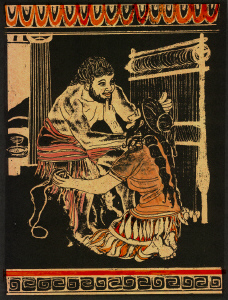

The ancient Italian peninsula was shaped by the different tribal inhabitants that shared a common 'Indo-European' origin linguistically and genetically, thousands of years before the foundation of the Roman Empire in 700BC. These 'Indo-European' speaking tribes arriving from the east and southeast, settled in Italy after invading, displacing and absorbing the peninsula's indigenous inhabitants. Many of the long established indigenous tribes such as the Sabines, Samnites and Campanians spoke in variations of the Latin's tribal language which was linked to Oscan, enabling them to communicate when they came in contact. Much the same way that the present day French, Spanish and Italian people can understand some of each other's words through their latin roots. Eventually the variations evolved into one commonly used form of latin spoken by the Umbrians.
Later colonising tribes came from the Eastern area of the Mediterranean. By the end of the Bronze age the peninsula was dominated by migrating tribes from the Aegean. The influential Etruscans arrived with their highly developed artistic culture, and a language that included an obscure form of the Greek Alphabet. The Greeks settled in the southern part of 'the boot' and Sicily, building Syracuse - one of the greatest cities of the ancient world!
Fifteen centuries later these early Grecian heritages were re-discovered by Italians, giving rise to "The Renaissance."
Each set of tribes populated a different geographical area, developing separate but similar cultures and language.They worked the land, established communities, codes of conduct, and laws, and were prepared to defend their territories against marauders. Some of the tribes even defeated the mighty Romans when they came to power.

When the Greeks waged war against the city of Troy, the Trojan hero Aeneas sailed across the Mediterranean Sea and founded Lavinium on the Italian Peninsula.
His son Iulus went on to found the city of Alba Longa, from whence came the royal twins Romulus (that Rome is named after) and Remus.
The Greeks colonised most of the southern part of Italy and called it Magna Grecia.
The coastal regions were renamed 'Italoi', the Greek for Vitulus, meaning veal or calf, because the land was most suitable for raising cattle.
The dominant tribe that lived in the southern part of present-day Calabria, called themselves 'Itali'.
The Southern part of Italy became the birthplace of The Kingdom of Rome and then The Roman Republic.
Ref: Patterns of Civilization. Burton F. Beers.
Funk and Wagnalls New Encyclopedia: Italy, History.
Gibbons: Decline and Fall of the Roman Empire.
http://faculty.ed.umuc.edu/~jmatthew/naples/ancient.html
More on the Romans for kids at:http://cybersleuth-kids.com/sleuth/History/Ancient_Civilizations/Rome/index.htm